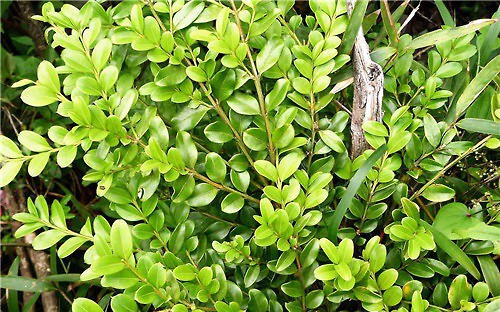Boxwood is a kind of boxwood, and it is also a shrub plant. Because of its plasticity, the boxwood is made into potted plants and kept indoors. So how should Buxus boxwood be cultivated? After making a potted plant, how should it be pruned and taken care of? The editor will answer it for you.
1. Breeding methods of Buxus boxwood
Plenty of sunlight and moisture The best choice for the placement of Buxus bonsai in the sun in the morning, cooler in the afternoon, good air circulation, and natural rain and dew. If indoor viewing, it is best to let it go to the sun and rain after ten and a half months. The pots of Buxus boxwood bonsai should always be kept moist. This is because the root absorption, leaf photosynthesis and the whole growth process require a lot of water. Of course, the demand also changes with the seasonal climate. Buxus poplar grows in small pots in the garden from the rivers and streams. The biggest change in the environment is that the humidity of the environment is lower. This requires our maintenance to provide it with timely and appropriate supplements. Therefore, watering must pay attention to the climate, pay attention to technology, and ensure quality. When the temperature is above 20℃ and there is no water in the pot, three steps of watering: First step, dry the soil (meet the water demand in the pot); second step, the branches and leaves should be soaked (watering at multiple angles); third step ,spray. In summer or when the temperature is above 20℃, if there is no shortage of water in the basin, follow the second and third steps; when the temperature is below 20℃ and above 10℃, there is no shortage of water in the basin. The third step is watering. After the "white dew" in autumn, when the dew is dry, spray water according to the third step. Do not water in the morning and evening on frosty days; do not water before the "Thirty-Nine Days" cold wave to prevent freezing soil, freezing branches and leaves, and also keep the basin well filtered and aerated.
Thin fertilizer and frequent application of Buxus boxwood fertilizer should adhere to the main fertilizer, natural fertilizer, human and animal manure. Be cautious in applying chicken and duck manure and high-efficiency fertilizer, and remember not to apply undeveloped fertilizer and excessive fertilizer, and to apply thin fertilizer and diligently. Apply some seasonal fertilizers before changing seasons, such as sprouting fertilizer in early spring, strong leaf fertilizer in summer, temperature-resistant fertilizer in summer, and thermal insulation fertilizer in winter; apply a bit of compensatory fertilizer after each pruning, and there will be too much water in the basin in rainy seasons and summers. Apply some supplementary fertilizers, and apply appropriate fertilizers if the growth is not good.

2. Shape trimming of Buxus boxwood
The shape is mainly cut. The wood of the boxwood is hard and brittle, the branches are thin and easy to damage, and the plasticity is not large. Therefore, first pay attention to the selection of piles. You can also use ropes to tie the cables appropriately. If the branches have large displacements, you need to get them in place several times. Avoid twisting branches with rusty iron wire, first to prevent damage to the skin, and second to prevent dead branches.
Buxus boxwood bonsai trunk grows very slowly and very vigorously, but the shoots grow faster, the density of the leaves will inevitably lengthen, and it will appear soft and loose. Only by controlling it with "pinning" can the ornamental value be guaranteed. That is, before the branches are not lignified, leave one pair, up to two pairs of tender leaves, and remove or trim the rest. Under proper water, fertilizer and other conditions, it will send out two tender shoots in ten days and a half. It repeats in this way, its branches appear short and thick, and the leaves can be multiplied by the product of 2, which continuously improves the ornamental value. Then it is necessary to remove the buds in time. Buxus vulgaris begins to have buds before summer and autumn. It blooms in spring, and the nutrients required for the flowers and fruits account for 70%-80% of the whole tree, which will inevitably affect its normal growth and appearance. We mainly focus on foliage viewing. Therefore, it must be removed from the beginning of seeing the bud.
Breeding Buxus boxwood is not very difficult, as long as you pay attention to giving it a warm, humid and sunny environment. Buxus boxwood is resistant to drought and semi-shadow, so you only need to pay attention to the pruning of the potted plants and the stability of the environment when raising it.